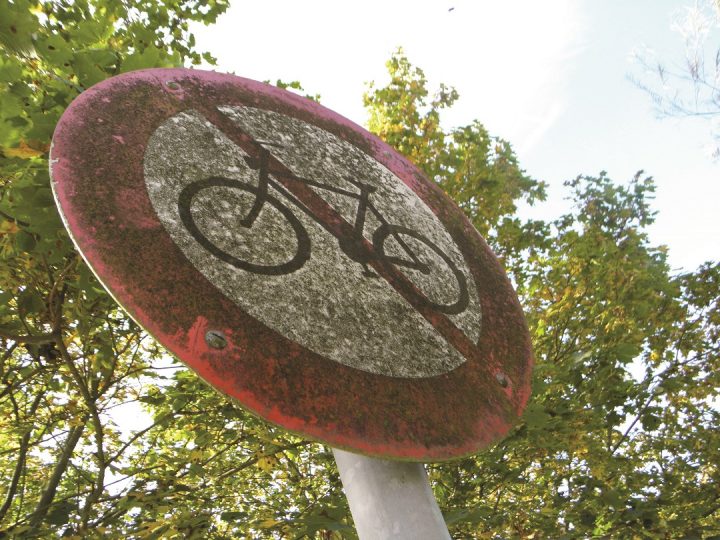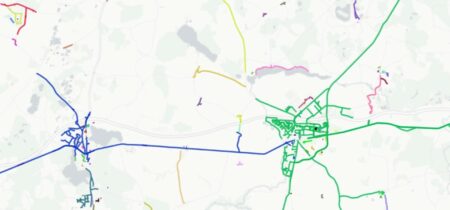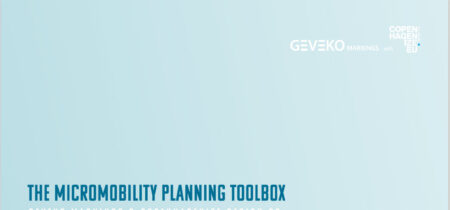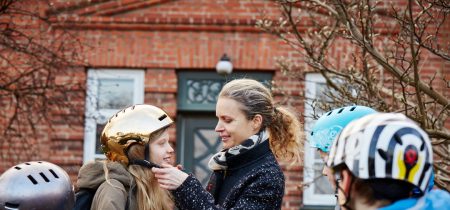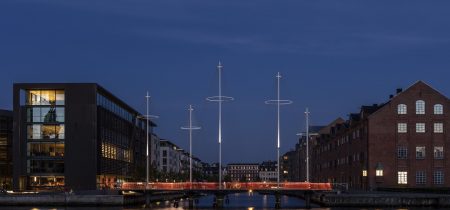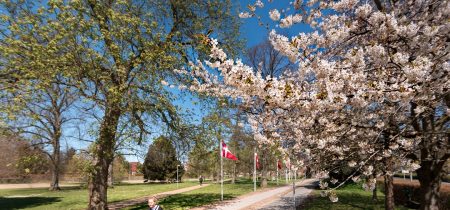Developing a plan
Cycle track planners should address the issue of whether the cycle track network should be strictly segregated from cars or whether the requirement can be relaxed. They should also consider whether the overall question of road closure, traffic calming, parking regulations, contra-flow cycling, etc. may be included in a cycle track plan.
By Troels Andersen
It is essential to consider the principles of cycle track planning before you actually start planning the cycling infrastructure. Municipal traffic planning and other planning must also be part of the equation. Finally, decisions must be made about how to use the existing cycling infrastructure.
In the 1960s a number of new local communities were designed according to principles of traffic differentiation, i.e. with one infrastructure for motor traffic and another for cyclists and pedestrians. Roads and paths intersect on different levels, often by a bicycle tunnel, since this is typically cheaper to establish than a bicycle bridge.
Such systems impart a great sense of security, which means that a significantly greater number of people choose to cycle, and children begin to cycle at an earlier age than in the case of more traditional traffic systems. However, as it turned out, there can be advantages to relaxing requirements for an extremely rigid segregation of road users in traffic differentiated systems.
A cycle track along the side of the road is one of the most useful types of cyclist traffic areas. In addition, there are a number of other excellent solutions, including safe, secure intersection design.
The existing and planned road hierarchy, including road and path classes with speed limits for cars, is crucial. A catalogue of ideas for cycling infrastructure discusses choice of corridor, among other things. The routes are drawn up in greater detail in the actual plan. Since every bicycle trip starts and finishes with a parked bicycle, bicycle parking is treated separately.
What to consider in a total plan when choosing suitable cyclist areas:
- Road closure and additional traffic calming can make cycle tracks unnecessary.
- A multi-story car park or parking cellar may create space for cycle tracks by reducing the need for curbside parking.
- Parking spaces for cars may be removed from one side of the road at a time, which will provide a few additional meters in the road’s cross section for better cycling conditions. This might make space for a cycle track/lane on one side of the road. If another few meters can be found it may be possible to establish cycling facilities on both sides of the road.
- Contra-flow cycling can give cyclists great accessibility benefits.
- Back street solutions where cyclists are diverted to cycling parallel to the main roads do not work, according to all Danish experience. Good cycling facilities must be primarily established on the main roads. Cyclist issues must be addressed where people actually cycle.
- Existing traffic differentiated residential areas with intersections at different levels (usually tunnels) can be made more bike friendly by also allowing cycling on roads with cars and allowing intersection on the same level at certain points. Cyclists’ sense of security in cycle track tunnels can be improved with better lighting and perhaps 24 hour- a-day lighting.
- Residential areas with mixed traffic may acquire speed zone status between two main roads where cycle tracks are required. This may be supplemented with traffic calming, such as quiet roads or living streets, i.e. designated play and leisure areas.
- Through roads through villages may be traffic calmed according to the principles of environmentally friendly thoroughfares.
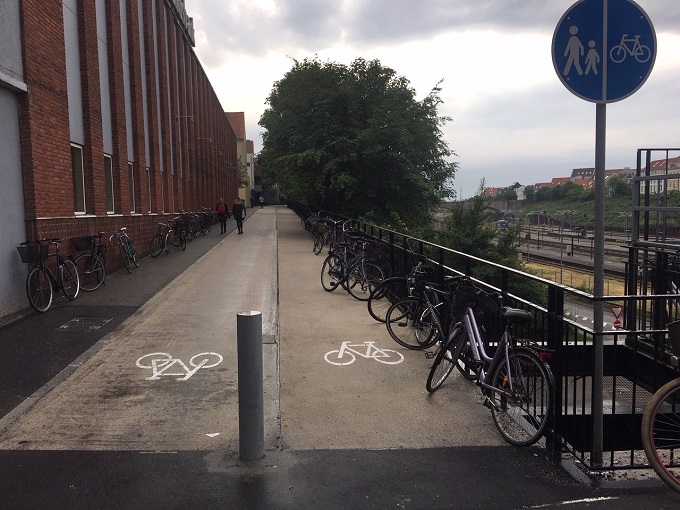
- Good planning in Aarhus municipality gives cyclists an important shortcut, while cars have to take the long way round.
The role of bicycle traffic should be decided in advance when planning urban reconstruction and urban development. In the case of major projects, objectives for the cycle share of trips, the so-called modal split, may be formulated. The cycling infrastructure’s planned objectives should be realistic. Infrastructure cohesiveness between existing urban areas and new urban development is crucial, and the funding for the necessary infrastructure in neighboring areas should be ensured as part of the urban development project. In addition to cycling infrastructure requirements, lighting, operations and maintenance are also vital if citizens are to be offered good cycling facilities.


